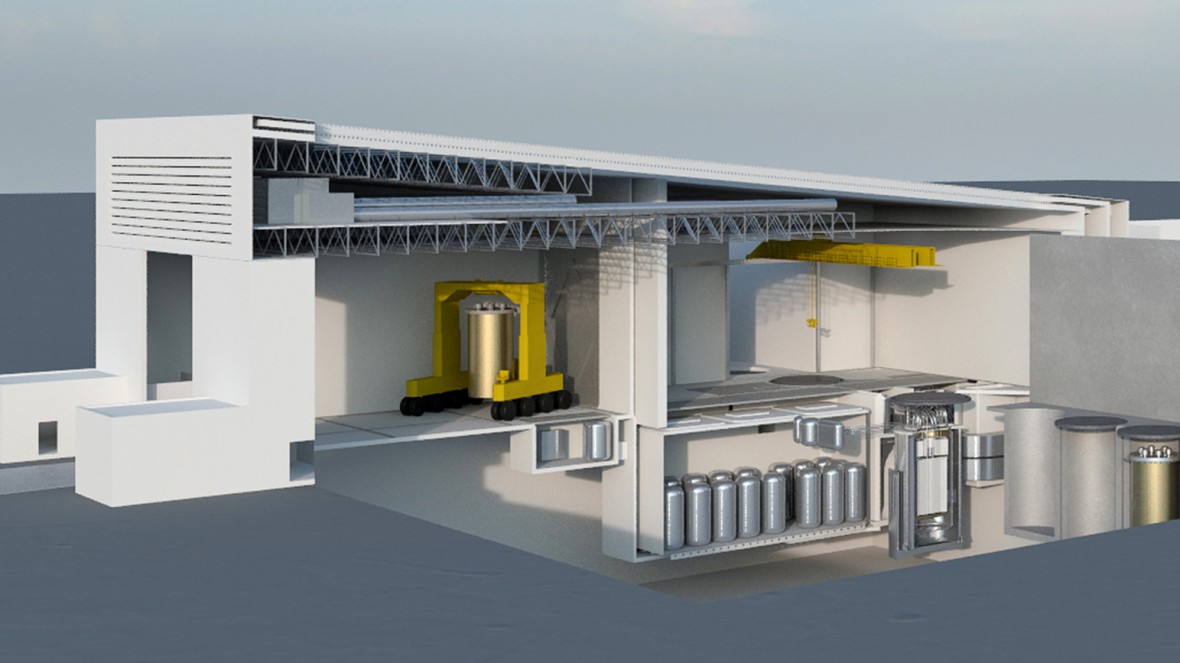An early regulatory review may put Terrestrial Energy on track to commission the first fourth-generation reactor in North America.
Canadian regulators announced that Terrestrial Energy has completed the initial phase of a design review for its molten-salt nuclear power plant, giving the Ontario-based company a small early lead in the race to commission the first commercial fourth-generation reactor in North America.
To be sure, it’s a very early step in what will be a long regulatory process, the first of three phases in just the “pre-licensing” review. All the Canadian Nuclear Safety Commission has really said is that the company has demonstrated it intends to comply with regulatory requirements, while noting that the company has a lot more to do to prove that its conceptual designs will operate safely in the real world.
It will be at least the later part of the next decade before any Terrestrial reactor will be up and running. But industry observers say the Canadian Nuclear Safety Commission’s nod represents an important step toward building a next generation of safer nuclear plants that could be cheaper to build and operate, and would meet a broader range of market needs.
The news is also notable as one more example of another nation forging ahead on the molten-salt technologies first developed decades ago in the United States. China is pursuing an ambitious and accelerated thorium-fueled molten-salt reactor, as MIT Technology Reviewpreviously reported, and so is the Netherlands nuclear research centerNRG (see “Fail-Safe Nuclear Power”).“It’s the biggest milestone since we formed the company, and an industry milestone as well,” says Simon Irish, chief executive of Terrestrial, which has selected the Canadian National Labs in Chalk River, Ontario, as the site of the first plant.
Meanwhile, fourth-generation-reactor companies such as London-based Moltex Energy and Advanced Reactor Concepts of Delaware have also opted to pursue early regulatory approval in Canada.
There are certainly efforts under way in the United States to pursue molten salt and other advanced nuclear technologies, including projects at the MIT Nuclear Reactor Laboratory and the university’s spinout Transatomic (see “Nuclear Energy Startup Transatomic Backtracks on Key Promises”). But so far, no known molten-salt projects have submitted a design certification application to the U.S. Nuclear Regulatory Commission (although NuScale is pursuing approval for a small modular reactor).
While the U.S. nuclear review process is considered the “gold standard” on safety, some startups and researchers believe it’s not adequately accommodating of advanced technologies. A specific critique is that the commission doesn’t offer the early feedback that would let companies properly assess regulatory risk before investing hundreds of millions of dollars in further design and development.So why are things moving faster overseas. There have been some efforts to improve the U.S. review process. In March, the Senate’s Environment and Public Works Committee passedthe bipartisan Nuclear Energy Innovation and Modernization Act, which would require the NRC to establish a regulatory framework for licensing advanced nuclear reactors. Energy Secretary Rick Perry, inrecent public appearances, has also highlighted the importance of pushing forward nuclear technologies, particularly small modular reactors—marking a rare area where the Trump administration is actively promoting a source of carbon-free energy.The Canadian process is better defined and offers a series of earlier official reviews, says Ryan Fitzpatrick, deputy director of the clean-energy program at the think tank Third Way. The commission evaluates designs on the basis of broader safety principles rather than specific technological requirements, which offers greater flexibility for the varied set of emerging technologies, he says.
Terrestrial’s 190-megawatt integrated molten-salt reactor combines several promising advanced nuclear approaches. Using molten salts rather than water to dissipate heat from the fission process is considered inherently safer, because it allows the reactor to operate at ambient atmospheric pressure. This lowers containment costs and enables cooling even when the system loses power (see “MIT’s Nuclear Lab has an Unusual Plan to Jump-Start Advanced-Reactor Research”).
The IMSR is also a small modular reactor. That means the components can be mass-produced in factories and shipped to their final site, promising to lower construction costs and risks (see “Small Reactors Could Kick-Start the Stalled Nuclear Sector”).

TERRESTRIAL ENERGY
Terrestrial is a technology developer and design vendor. It hopes to get its plans preapproved through regulatory agencies and license its technology to other companies that will construct and operate the plants.
CEO Irish says he’s confident the company will be able to address the areas of work highlighted in the review, improving predictions about the behavior of the reactor core and collecting additional data on safety margins and operating performance.
The company’s U.S. affiliate has also begun early regulatory discussions concerning an advanced small modular reactor at Idaho National Laboratory, but it doesn’t plan to submit a licensing application until late 2019.
Many energy experts say the world is going to need far more nuclear power to address the escalating threat of climate change, simply because it’s a carbon-free energy source that doesn’t face the intermittency limitations of renewables like solar and wind.
But the industry has languished amid widespread public safety concerns, massive project costs and risks, high-profile boondoggles, and challenging regulatory requirements (see “Meltdown of Toshiba’s Nuclear Business Dooms New Construction in the U.S.”). Nevertheless, hopes are growing that advanced reactors can overcome some of these issues, helping to restore momentum in the sector.
“Advanced reactors are definitely a big part of getting nuclear to meet its full potential and pull its weight in the climate fight,” Fitzpatrick says
.
.



Your Opinion is valid .